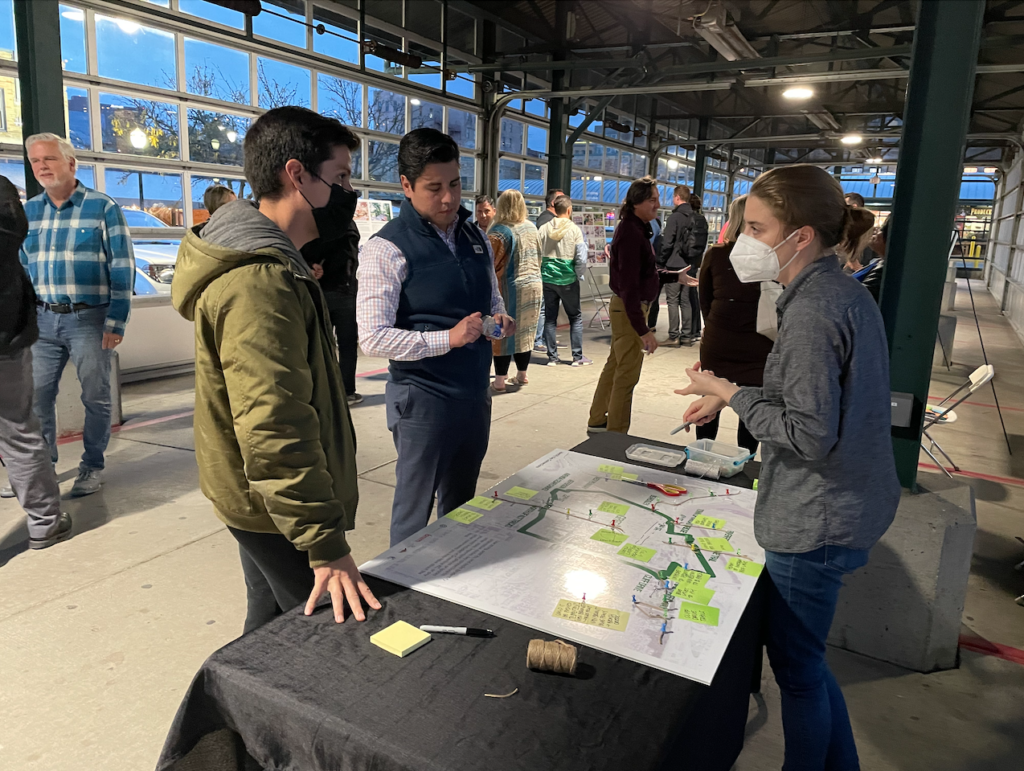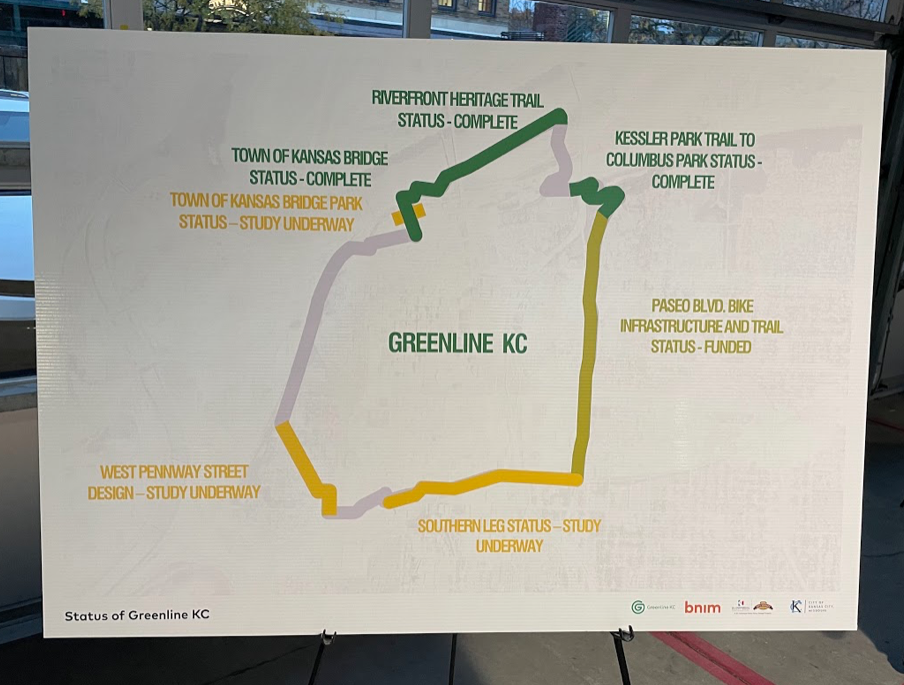
Project partners hosted an open house on November 10 for the proposed Greenline KC, a 10-mile urban loop around greater downtown connecting neighborhoods, showcasing art, and encouraging discovery.
According to planners, Greenline KC will offer recreation and outdoor amenity spaces, and create a stage for neighborhoods along the loop to express themselves, fostering cross-cultural interaction and appreciation.
Over the past decade, other cities have developed similar concepts: the High Line in New York, the Beltline in Atlanta, the Underline in Miami, the 606 in Chicago.
The planners hope to create a safe and beautiful urban path to encourage people to get out and walk, exercise and meet their neighbors. As a pedestrian path, residents and visitors will be able to see KC from a new perspective — under bridges, along parks, next to buildings, overlooking cliff sides. From art districts, to historic neighborhoods, to heritage trails, it will be a new way to explore the core of the city.
Starting at the Riverfront Heritage Trail, the loop will head east to Industrial Trafficway, Cliff Drive to Paseo, then west along the Kansas City Terminal Railway tracks. From there, it will touch 22nd Street, Avendia Cesar Chavez, Jefferson and West Pennway before heading north on Beardsley, then 4th and 3rd streets and the Town of Kansas Bridge.
Ryan McCabe, architect and urban designer at BNIM, said there is not yet a timeline for the project to be complete.
“We’ve been working through that, obviously, that’s tough given the scale of it, it’s really kind of a summary of a series of different projects,” McCabe said. “We’re currently working to try and put together an entity to kind of oversee all of that and put together a larger master plan as to how we can implement this in and make it happen across the board.”
Funding will likely come from a combination of federal and state grants, as well as philanthropic partners in the Kansas City area.
“They see this as a great asset to public health and an improvement to our community,” McCabe said. “It’s really kind of a cocktail that we’re trying to put together, a series of different financing mechanisms in order to make the project happen.”
Sections of the Greenline are already complete and in use like the Town of Kansas Bridge, Riverfront Heritage Trail and the Kessler Park Trail to Columbus Park.

“The Heritage Trail for instance, you know, it may be pretty light touch in that it’s maybe some rebranding, but it’s more or less intact and so it’s really trying to connect that into some of the other parts of the city to give access to people who maybe live in 18th and Vine or the Crossroads where they can walk or hop on a bike and have access to the riverfront or to the bluffs over the West Bottoms,” McCabe said. “It’s really about trying to kind of tie a bunch of things together in order to make one big, cohesive system.”
Bike infrastructure and the trail along Paseo Boulevard have been funded. Studies are underway for other sections like the park at the Town of Kansas Bridge, street design for West Pennway and the southern leg of the loop.
The southern leg will serve as an east-west connector from The Paseo to the Union Station pedestrian bridge. Through a combination of public and private property along the north side of the Kansas City Terminal Railway tracks, the plan maps out a car-free pedestrian and cyclist experience, offering unique views of the city and tracks. The planned route will re-activate bridges and transform post-industrial sites into new park and recreation spaces, promoting public health and giving residents better access to urban nature.
The planned loop would create connections to other trails leading to Kansas City, Kan., North Kansas City, the Downtown Airport, Kessler Park, and multiple connections headed south.
Today, Greenline KC is in the visioning and planning stage, where the public is encouraged to share their ideas on how this urban path can be a transformational project to benefit Kansas City. A short survey will be available to the public in November, and results will be shared with the public in December.
At the open house, they wanted to hear from people throughout the community in order to assess what Kansas Citians want to see along the trail.
“We think this is a good idea, but we really want to hear from others as to what other programs and amenities that they want to see along a system like this, what are the other routes that may make sense – may include more people or may connect to other trail systems that are in place – and so this is the first of what will be a series of meetings to try and get community input as to how we put a design that is really reflective of what the community wants to see in each neighborhood,” McCabe said.
The planners are using data from similar projects to analyze impacts on those cities.
“It’s been super transformative in a number of ways,” McCabe said of the Beltline in Atlanta. “One, in terms of public health, you know, it’s improved public health… I think we’re working to partner with Children’s Mercy Hospital, they have a great plan called the Kansas City Physical Activity Plan to try and improve public health across the Kansas City community and we think this is a perfect tie in and partnership with them.”
McCabe said the Beltline has also created economic development, leading to a series of new developments, promoting affordable housing, transforming previous brownfield sites and industrial sites and reinventing them as green infrastructure.
Visit thegreenlinekc.com to take a survey and find information on future meeting dates when they’re available.

















